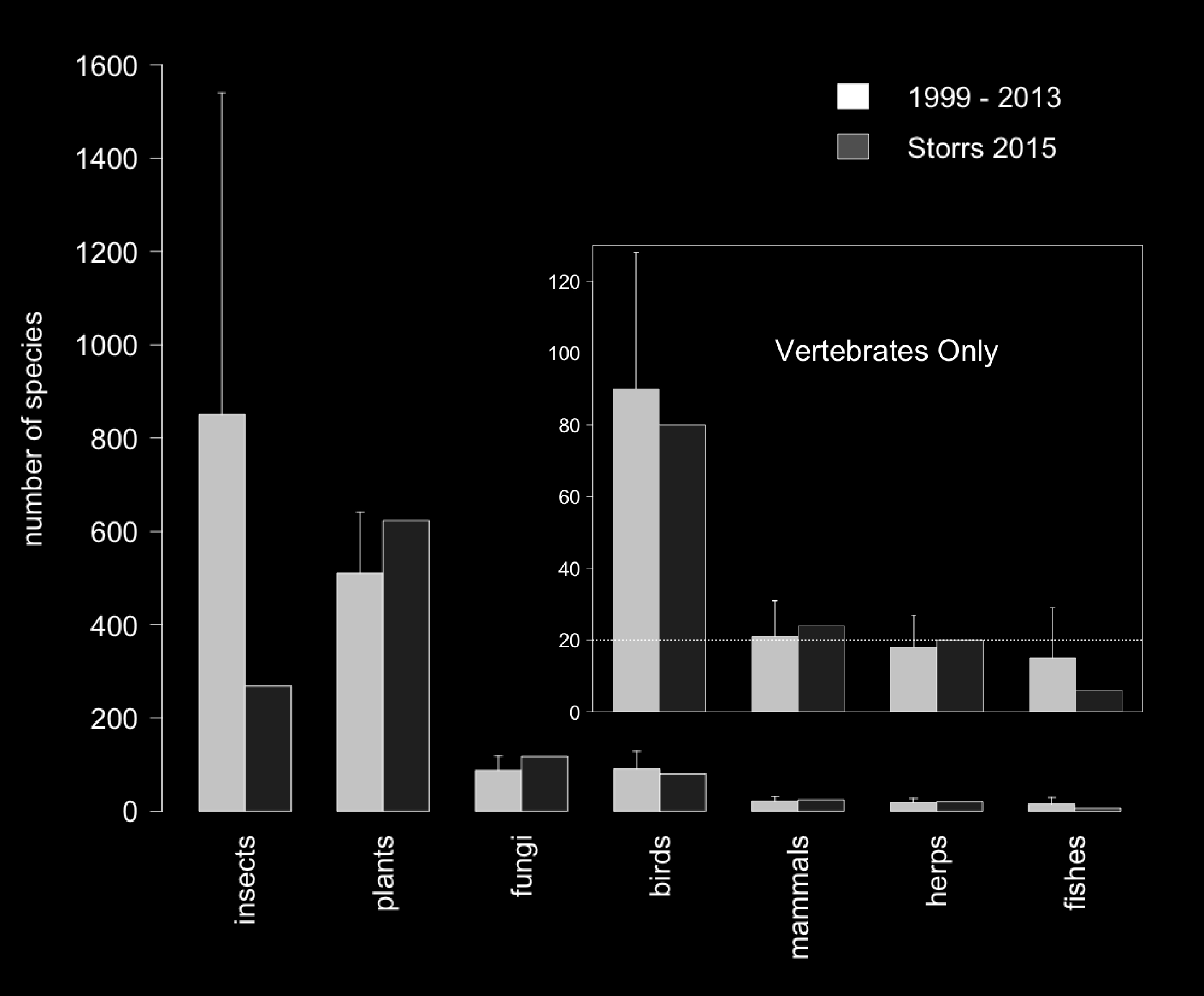On July 24th – 25th 2015, 49 experts collaborated with >150 citizen scientists to identify 1180 species in a 24-hour marathon of biodiversity survey (see a meta analysis at the bottom of this post).
The UConn BioBlitz 2015 had many workshops that continued day and night including Bat activity monitoring, Blacklight/Mercury lamp curtain survey for nocturnal insects, setting camera traps for mammal activity, owl prowl, science expose, ants exploring space as well as tours of Collections Facility and the UConn EEB Greenhouse.
The event kickstarted with a keynote lecture by the director of the Yale Peabody Museum David Skelly. His lecture emphasized importance of natural history knowledge forming the foundation of any biological study. Skelly’s work on New England frogs has contradicted with the findings of Harvard professor Tyrone Hayes who has been advocating that a widely used agricultural weed killer Atrazine is responsible in feminization of frog testicles. You can watch the Teale Lecture from Tyrone Hayes here (the actual lecture starts at 13 minutes into the recording). In his lecture Skelly painted a different picture by showing evidence that feminization is a part of the natural history of the frogs.
Immediately after the keynote lecture, BioBlitz teams formed by citizen scientists and experts set out to record and if possible collect all living things they encountered. There were many dedicated local organizations such as the Connecticut Valley Mycological Society and Horizon Wings the raptor rehabilitation and education group informing citizen scientists.
Perhaps one of the most exciting observations were made during night time. Bat activity recording workshop has used an antenna that converts a tablet into a “bat radio” which can analyze the sound profile and identify the bat species producing the call. Among the recorded species was the Hoary Bat (Lasiurus cinereus).
Observations began to be registered to the UConn BioBlitz iNaturalist project website. The data collection headquarters were based in TLS-154 where observations appearing in the map were projected on the screen real-time. Based on observations a number of field guides are now compiled:
Field Guide to Fungi of Storrs
Field Guide to Algae and Cryptogams of Storrs
Field Guide to Flowering plants and Conifers of Storrs
Field Guide to Invertebrates of Storrs
Field Guide to Vertebrates of Storrs
The following graph prepared by one of the members of the organization committee Tim Farkas compares BioBlitz 2015 with previous BioBlitzes. As you can see the performance for plant survey and identification was outstanding. The insect identification was however rather low. This shouldn’t be suprising. In all BioBlitzes there’s never enough entomologists and a massive fraction of biodiversity comes from arthropods.
2016 BioBlitz will possibly be the biggest ever organized thus far. You can have more information here.
And for a laugh and to build the BioBlitz spirit around the world here comes a tutorial on the BioBlitz dance. Hurra to all BioBlitzers of the World!



3 Comments
Thanks Uzay
What a wonderful recap with the video and data!
Thank you. Onwards UConn EEB!